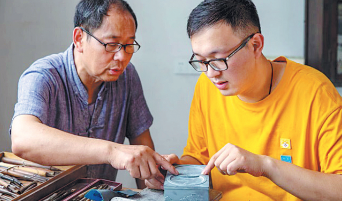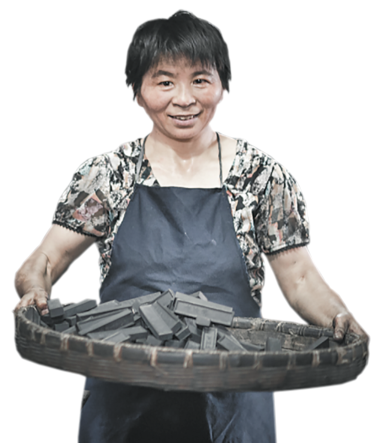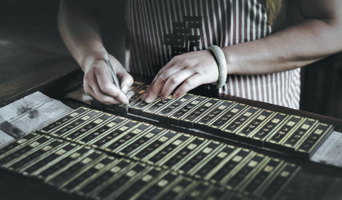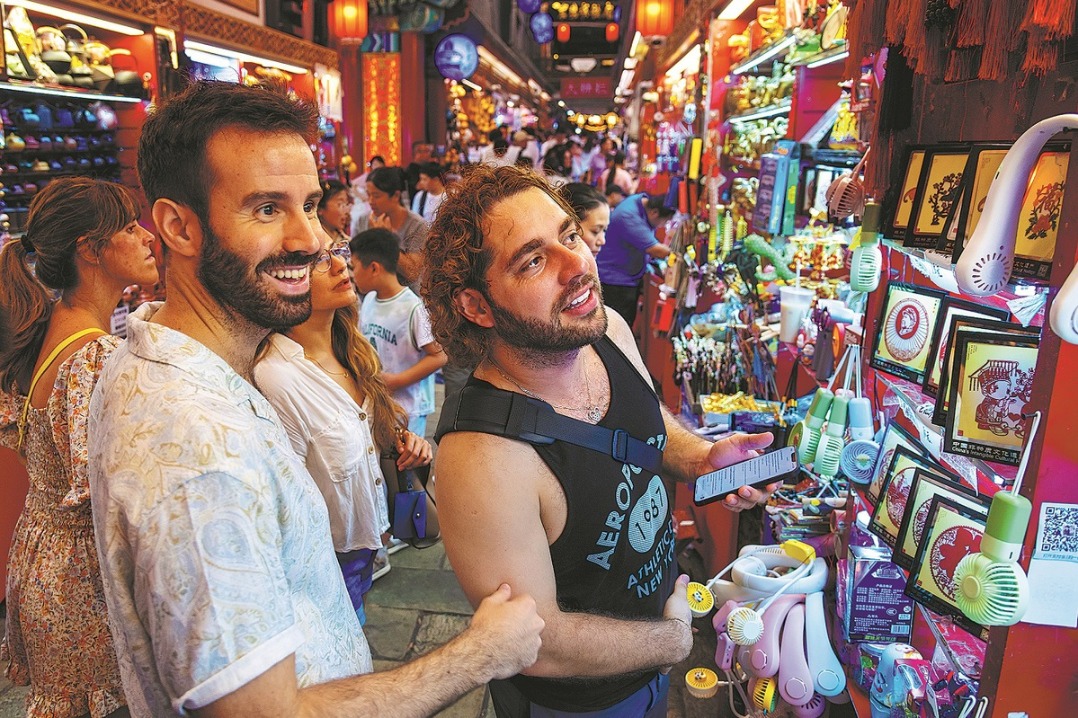A generational legacy set in stone

The time-consuming process of carving a stone while retaining its natural textures and unique beauty can be used as a metaphor for an education that helps each individual pupil to achieve their full potential.
Anhui province is good at both. As the place where the "four treasures of the study", namely, the brush, ink stick, paper and ink stone, originated, it has a tradition of pushing education to the fore since ancient times.
The ink stones produced in Anhui's Shexian county, which are made of a local black slate, are highly reputed for their ability to keep the ink wet for a long time and their exquisite engraved patterns full of intricate details.
Making a quality ink stone requires rigorous craftsmanship, consummate skill and passion for traditional culture. That's what Hu Qiusheng, an ink stone carver and engraver in Shexian, has pursued and passed down in his family.
Four decades of handiwork has deformed his fingers, but won him many awards in the field of crafts and fine arts. He has trained hundreds of craftsmen, dozens of whom have become inheritors of the intangible cultural heritage at the municipal or provincial level.
Hu's own company, one of the county's leading ink stone producers, also initiated and sponsored competitions that encourage younger generations of ink stone makers to display their skills and further develop the craft.
In the late 1960s, he first got to know about the craft from his father, who worked at a local factory that used and produced ink stick grinding stones. Back then, a single ink stone could sometimes be bartered for a metric ton of wheat.
"I knew it was very valuable," Hu says.
As he entered middle school, he became fond of painting, especially drawing sketches.
In 1979, the then 19-year-old followed in his father's footsteps, starting to work in the ink stone factory. The tough man's artistic talent and constant endeavor to perfect his skill turned him into the most prolific engraver in the factory.
One day, he met some Japanese collectors who had traveled a long way to the small county in East China's hinterland to appreciate the etchings on the local ink stones and to learn about the history of the craft.
"I was then determined to work harder to further promote the craft that originated in my hometown," he says.
As the country adopted its policy of reform and opening-up in 1979, Shexian county's ink stones were soon plunged into a larger market. In the 1980s, factories and family workshops that produce ink stones sprang up across the county.
To standardize their production, Hu, who was reputed to be one of the best craftsmen in the county, decided to found a company and launched his own ink stone brand Heshibi in 2001.
Seven years later, he established a museum that records the evolution of the ink stone craft in Shexian and displays fine examples of local work.
Both the museum and his company have been turned into a study tour destination, which welcomed more than 80,000 students in 2019.
"I hope more people will notice the artistic and cultural value of ink stones," he says.
He has enacted bold changes to the traditional craft to help it remain dynamic, such as the use of various materials to make ink stones, and the design of decorative patterns that echo big events of our times.
He has also etched the love he has for his hometown into the handmade articles. The miniature landscapes showing the ports, bridges and blocks of Shexian county are among the decorative patterns he has applied to the ink stones.
"I'm still keen to create more handcrafted items," he says.
Those people with whom Hu's family are on intimate terms are all involved in the trade. Hu Bin, son of Hu Qiusheng, noticed from a very young age that the visitors all behaved in a remarkably deferential manner in front of his father.
"Why are they all in awe of you?" Hu Bin once asked his father, curiously.
"Because of my handicraft skills," answered the father.
Hu Bin was impressed by the fact that, in the local community, a person's virtuosity in making ink stones could make them so widely respected.
The young boy didn't understand much about his father's continuous pursuit of better craftsmanship and lifelong commitment to carrying on the art of making ink stones.
He just saw his father sitting at his workbench for hours on end, etching delicate patterns on a chosen stone. Carving and engraving tools, such as knives, chisels, scoops, mallets and gouges were laid out on the bench.
Hu Bin would select a small knife and take it to his primary school, where he used the tool to engrave seals featuring various patterns, mostly cartoon characters from popular animations, on his erasers.
"Both the knife and eraser were so inconspicuous, my teachers would rarely catch me engraving seals in class," he recalls with a sly grin.
The childhood pastime might have sown the seeds of craftsmanship in Hu Bin's heart.
As he grew up, he left his hometown and went to Shanghai where he completed his university studies and secured a stable job as a customs official.
"Shanghai is good for the high life. You can enjoy a wide variety of cuisines and entertainment activities there. However, I still felt lonely," he says.
"These pastimes failed to bring me lasting happiness."
Hu Bin started to miss the cordial atmosphere among the neighbors in his hometown and the experience of throwing himself into creating something — something his father and aunt, also an ink stone carver, got to do on a daily basis.
In 2015, the then 25-year-old decided to return home and learn the time-honored craft of his family.
"I'm obsessed with the process of turning a design from my mind into a three-dimensional carving on the ink stone. That gets my adrenaline pumping," he says.
He has attended the arts sessions offered by universities including Tsinghua University and the Central Academy of Fine Arts, through which he was exposed to varied ideas pertaining to art creation, and he is now taking up a position at his father's business producing ink stones.
Sometimes, however, they might have different opinions about how to run the business and how to develop the traditional craft.
"Fortunately, my father always supports me in trying things and exploring new possibilities," says Hu Bin. "After all, I'm young and have time to learn from my mistakes."



Today's Top News
- Top DPRK leader visits China-DPRK Friendship Tower
- China proposes global cooperation body on AI
- Scholars propose inclusive human rights framework
- Turning challenges into opportunities
- Nighttime economy savoring more success
- China calls for calm over border clash






























